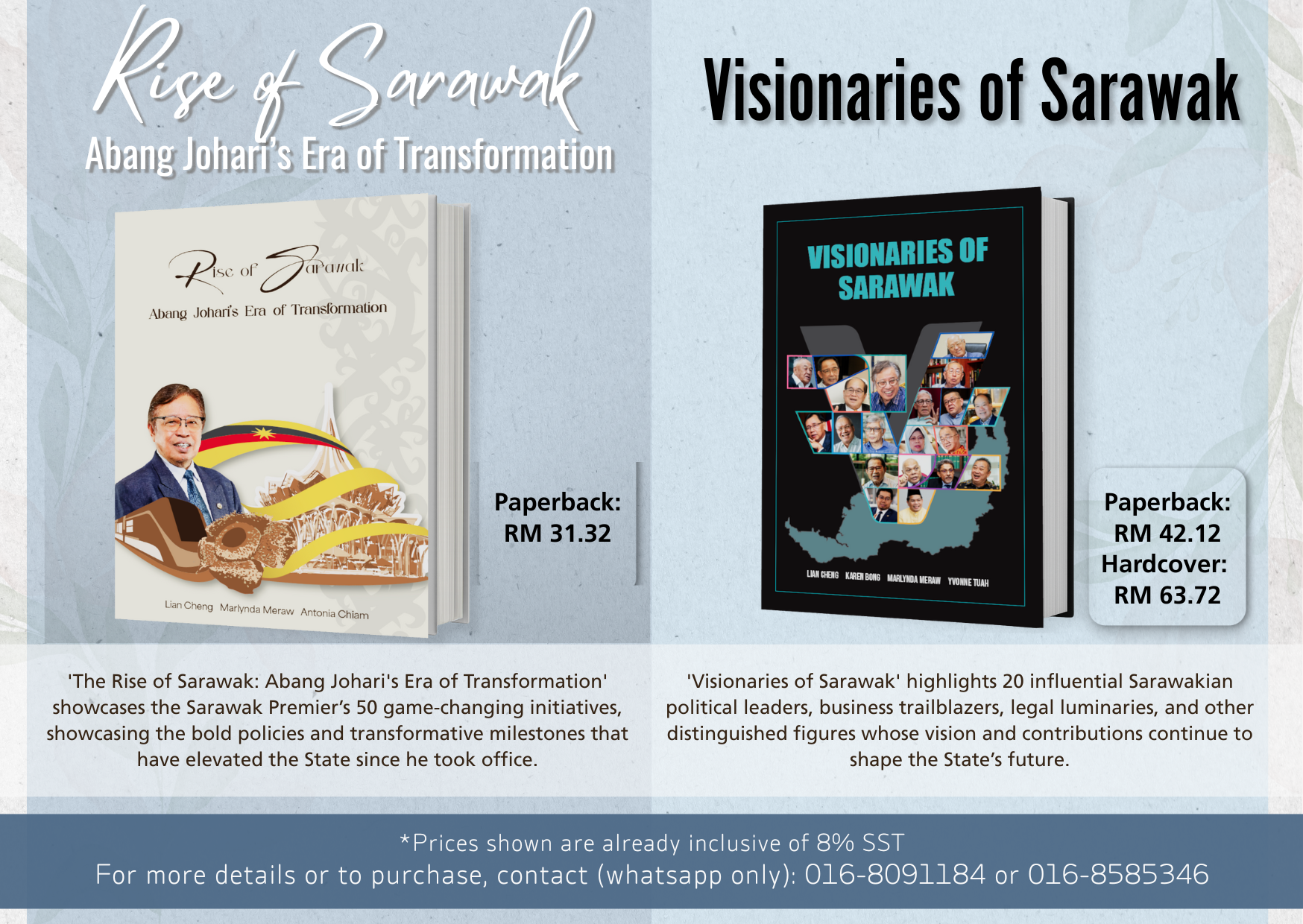
By D’Drift Team
“TAKE Me Home, Country Roads” seem fitting playing in the background as we drive through the winding roads leading to the Annah Raih Longhouse Homestay. The road rolls and dips like a great turning wheel, rising to meet the sky before descending into the valley’s embrace.
Lush foliage arched overhead, forming a green canopy that diffuses the afternoon sun, offering respite from its heat. In the distance, misty mountain silhouettes mark the border between Malaysia and Indonesia, standing like sentinels over an ancient land.

As we neared our destination, Jenny Dudu, our host, awaited us with a warm smile at a small hut near the entrance. Others had arrived alongside us—some local, some foreign—all drawn by the promise of culture, history, and the simple beauty of longhouse life.
A shot of ‘tuak’ (rice wine) was pressed into our hands, the age-old gesture of welcome warming both throat and spirit.
The longhouse showed itself before us, its walkway broad and flanked by homes standing in quiet symmetry. There are eight homestays within the village, each offering a glimpse into a way of life shaped by the wisdom of past ancestors.

Jenny’s homestay sat to the left, reached by a short bridge leading to a house crowned with a sharply angled roof, reminiscent of those found in the old towns of Europe. Though modest in size, it exuded warmth and comfort—a haven of simplicity. A wooden staircase descended to the kitchen below, while the room itself, though humble, was ample for two. Jenny, ever attentive, ensured our every need is met with the grace of a seasoned host.


Annah Raih Longhouse is pervaded in time, its history stretched back more than three centuries. It is the oldest of its kind in Sarawak, first opening its doors to visitors in the 1990s before officially joining the homestay programme in 2006. The settlement comprises three distinct longhouses—Rh Panjang Kupo Seba, Rh Panjang Kupo Terekan, and Rh Panjang Kupo Sijo —each with stories woven into its walls.
Even during the Gawai harvest festival, when the village is awash in celebration, guests are welcomed into the heart of the festivities, where tradition thrives in dance, laughter, and the aroma of feasting.
Jenny spoke of the experiences awaiting visitors—jungle treks leading to the cascading waters of Ribuan Prutan, the rhythmic thrill of rafting, the artistry of mat-weaving, the ancestral skill of foraging, and the concentration and precision required to wield a blowpipe. Each offering is a thread to the intricate design of the Bidayuh heritage. The homestay welcomes around 500 guests annually, a testament to its reputation as one of Sarawak’s most beloved retreats.


What remains: Tales of skull and steel
Our journey through the village leads us to a quiet enclave—the ‘Rumah Panggah’ or Skull House, a relic of an era long past. Nearby, 78-year-old Tayei Emily Minah, a lifelong resident of Annah Raih, welcomed us with stories laced with sentiment.
Inside, 13 skulls rest, their number once far greater, but time and theft diminished them. Some were stolen for sinister purposes—black magic, Tayei told us, her voice tinged with sorrow. To protect what remains, visitors are no longer permitted to enter with bags.

These skulls predate the arrival of Sir James Brooke, Sarawak’s first White Rajah. “Headhunting was forbidden once he (James Brooke) came,” Tayei recounted, though whispers persisted that some warriors defied his decree, continuing the practice in secret.
Once, these skulls played a role beyond mere remembrance. When illness shadowed the village or unseen forces threatened its peace, the high priest and shamans would gather to decide if a ‘Gawai Panggah’—a sacred skull festival—should be held. The last took place in 1990. With the passing of the village elders, the rituals, too, faded into silent oblivion.
“It is a shame,” Tayei lamented, her gaze distant. “Our cultures and customs are lost because no one is taking over.”
Unlike the ‘Gawai Padi’, the harvest festival that calls upon benevolent spirits for abundance, ‘Gawai Panggah’ was one of appeasement, a plea to ward off misfortune.

Nearby, an old cannon rested in solemn repose. Once stationed at the longhouse chief’s doorstep, it was moved to the Skull House after an attempted theft. Its presence now confined to daylight hours for visitors to behold.

A pause in the path, a moment in time
We set off from Serian at 9.50am, the road stretching an hour ahead of us. But journeys are never just about about distance—they are about the unexpected turns that shape the experience.
A fallen cotton tree, sprawled across the path just over a kilometre away to Annah Raih Longhouse brought us to an abrupt halt. Yet, fortune favoured us; St. Philip’s Church stood nearby, offering a place to rest while the Padawan Municipal Council cleared a narrow passage.

Among those waiting is a Dutch family, two days into their Sarawakian adventure. Their day’s itinerary included a visit to Annah Raih Longhouse before a hopeful encounter with the elusive orangutans at Semenggoh Nature Reserve.
“We saw one this morning,” Margaret, the mother, shared with eager anticipation, “but we are hoping to see more at the next feeding.”
Bako National Park awaited them in the evening, another chapter in their exploration of Borneo.

At last, at 12.40pm, the path was cleared. The road beckoned travellers once more, leading us into the waiting arms of Annah Raih Longhouse.

For those who seek an experience beyond the ordinary, Annah Raih welcomes visitors with open doors and open hearts. Whether for a night’s stay or a fleeting day trip, the warmth of its people lingers long after departure. Before you visit, call Jenny at 016-871 5644 to arrange your stay, or simply arrive, pay the RM10 entrance fee, and step into the living history of the Bidayuh in Padawan. — DayakDaily








